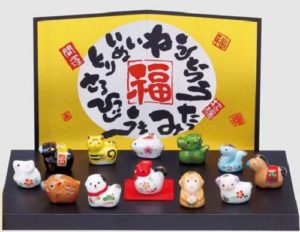Japanese New Year Preparations
Shogatsu is a sacred time for Japan and they have to be well prepared to receive the coming of the New Year. Decoration for New Year’s usually starts on December 28. To start decoration on the 31st is considered bad luck, calling it “Ichiya-Kazari,” which means “one night varnish”. The decorations are taken down on January 7. From outdoors to indoors, decorations, they say, bring good luck to every household and that is part of their tradition.
The items for decorations to prepare the entrance of the New Year are listed:
1. Shimenawa
Shimekazari or shimenawa are called sacred ropes. It functions as a means of discouraging wicked spirits and sending them away. They are occasionally even seen decorating farms and private residences, notably during the New Year. The shimenawas are used as a symbol of purity, and also to protect the structure for the upcoming fresh year. It is made with a twisted straw rope, paper decorations, and a tangerine are hung on various locations to bring good luck.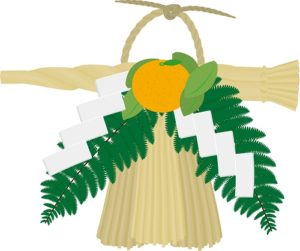
2. Urajiro (Ferns)
It is a fern with impressive leaves, spreads via its roots, sometimes forming great colonies of plants. Since the leaves are white on the underside they symbolize purity of heart. The silvery color also hints at the white hairs of a long life, and since the fronds are borne in pairs, they also represent a faithful couple growing old together. The many-branched leaves represent a happy family, prospering generation after generation.
3. Daidai (Bitter Orange)
Daidai is a Japanese citrus that’s considered a symbol of longevity in Japan because they will remain on a tree for several years if no one picks them. They turn orange in winter and back to green in summer. The word Daidai means “several generations.” The fruit of the daidai is extremely bitter and is seldom eaten. It’s used as a flavor in cooking and its peels are used in traditional Japanese medicine.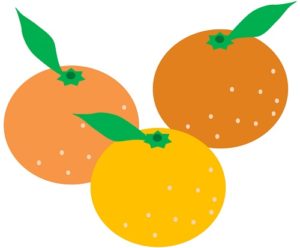
4. Kadomatsu
Kadomatsu is a traditional Japanese decoration of the New Year placed in pairs in front of homes to welcome ancestral spirits or kami of the harvest. They are placed after Christmas until January 7 and is made from three diagonally cut bamboo pieces of different sizes and pine or ume twigs tied together with a straw rope. Every kadomatsu item has a spiritual meaning: The bamboo is a symbol of strength and prosperity and the pine symbolizes long life. The three bamboo pieces represent heaven, humanity and the earth.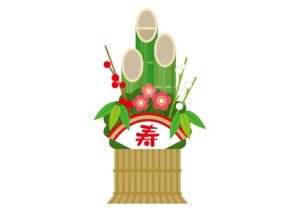
5. Kagami-mochi
It is a special traditional Japanese decoration for the New Year, usually displayed inside the house in the kamidana, for Toshigami, the god of the new year, to bring good luck and prosperity in the New Year. Kagami-mochi is made from two rice cakes (mochi) of different sizes, the smaller placed over the larger one, and a daidai. In some versions, the mochi are placed on a konbu sheet, a symbol of pleasure and joy.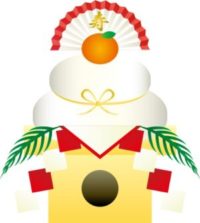
6. Eto
Along with talismans and charms, ornaments with the “Eto” (Chinese zodiac animal) of the year and “Shichifukujin” (the seven Japanese deities that are said to bring good fortune) are sold at shrines and many people buy them for the New Year. In Japan, 12 animals come each year in order. It is said to lead to good fortune if you decorate the ornament of the New Year of the zodiac.
